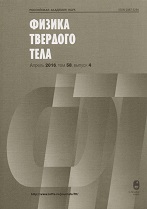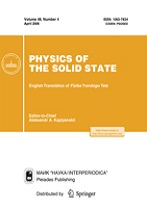|
This article is cited in 1 scientific paper (total in 1 paper)
International Conference ''Mechanisms and Nonlinear Problems of Nucleation, Growth of Crystals and Thin Films'' dedicated to the memory of the outstanding theoretical physicist Professor V.V. Slezov (Proceedings) St. Petersburg, July 1-5, 2019
Semiconductors
Effect of solid-state epitaxial recrystallization on defect density in ultrathin silicon-on-sapphire layers
S. D. Fedotovab, V. N. Statsenkoa, N. N. Egorovc, S. A. Golubkovc
a Epiel, Zelenograd, Moscow, Russia
b National Research University of Electronic Technology
c Research Institute of Materials Science and Technology, Zelenograd
Abstract:
The main technological problem in the manufacture of electronics on silicon-on-sapphire (SOS) wafers is the high density of defects in the epitaxial silicon layer. The modern method of obtaining ultrathin SOS wafers using solid-phase epitaxial recrystallization (SPER) and pyrogenic thinning that significantly reduce the defect density in these layers. Nevertheless, the influence of the defect density in submicron SOS layers on the structural quality of ultrathin SOS layers remains unclear. In this work, ultrathin (100 nm) SOS wafers were obtained by SPER of submicron (300 nm) SOS wafers with different structural quality. The crystallinity of 300 nm layers before the recrystallization process and ultrathin layers was determined by XRD and TEM. It was found that the smallest values of the FWHM 0.19–0.20$^{\circ}$ were observed for the ultrathin SOS layers obtained on the basis of 300 nm SOS wafers with the best structural quality. It was shown that the structural perfect near-surface Si layer, which serves as a seed layer in SPER process, and the double implantation regime allow to reduce the linear defect density in the ultrathin SOS layers by $\sim$1 $\times$ 10$^4$ cm$^{-1}$.
Keywords:
silicon-on-sapphire, epitaxy, heteroepitaxy, gas-phase epitaxy, silicon-on-dielectric, solid-phase recrystallization, ultrathin silicon, implantation.
Received: 16.07.2019
Revised: 16.07.2019
Accepted: 25.07.2019
Citation:
S. D. Fedotov, V. N. Statsenko, N. N. Egorov, S. A. Golubkov, “Effect of solid-state epitaxial recrystallization on defect density in ultrathin silicon-on-sapphire layers”, Fizika Tverdogo Tela, 61:12 (2019), 2349–2354; Phys. Solid State, 61:12 (2019), 2353–2358
Linking options:
https://www.mathnet.ru/eng/ftt8565 https://www.mathnet.ru/eng/ftt/v61/i12/p2349
|


| Statistics & downloads: |
| Abstract page: | 34 | | Full-text PDF : | 11 |
|





 Contact us:
Contact us: Terms of Use
Terms of Use
 Registration to the website
Registration to the website Logotypes
Logotypes








 Citation in format
Citation in format 
